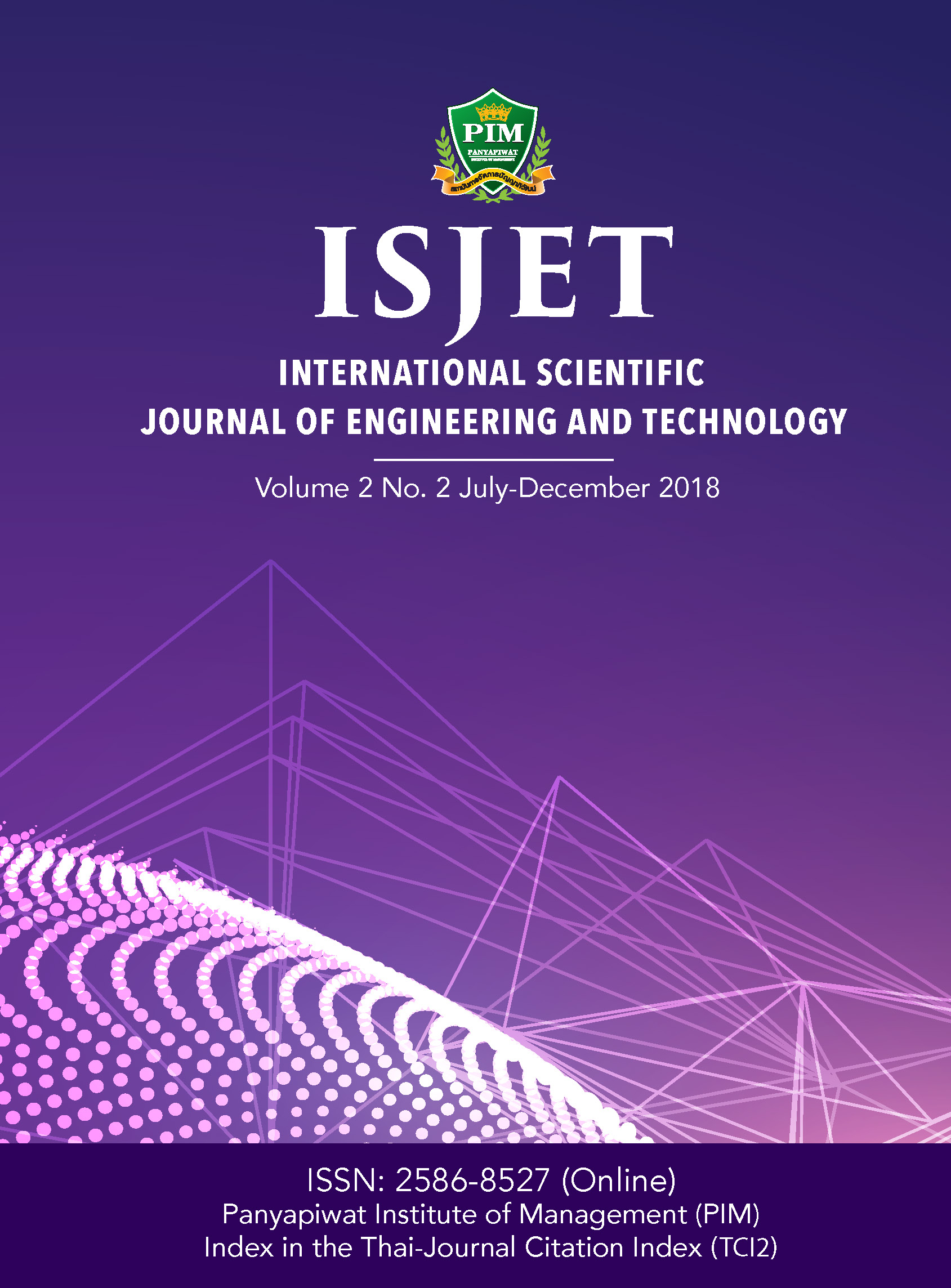Economic Dispatch Management of Electric Power Plants for Profit Maximisatio
Main Article Content
Abstract
This paper presents a spreadsheet-based optimization program that was developed to help make a management decision on how much electricity and steam should be generated by each of the dual power plants and sold to each group of the customer during peak hours and off-peak hours to achieve the maximum profit without violating their sales contractual agreements. Several quantitative determination processes of unit cost, prices and profits were constructed to help understand the calculation procedure hierarchically and embedded into the program. The mathematical linear programming models for optimizing the total profit during both periods of time of use were formulated. Two feasible scenarios for each period of peak hours and off-peak hours towards profit maximization attainment were simulated. The simulation results show that the optimal scenario between the two is applicable to be executed in both periods of time of use. Although some electricity demand could not be fully satisfied and the company had to be penalized financially, this scenario provided the total maximum profit and was able to satisfy the pow-er systems and the legal constraints and not severely violate the sales contractual agreements relative to another scenario. The results from sensitivity analysis show strong effects on the profitability allowing to examine a series of possible changes that will not affect the optimal solution of economic dispatch management.
Article Details
เนื้อหาข้อมูล
References
2005.
[2] H. Happ, “Optimal power dispatch – a comprehensive survey,” IEEE Transactions on Power Apparatus and Systems, vol. 96, no. 3, pp. 841-854, 1977.
[3] A. Mahor, V. Prasad, and S. Rangnekar, “Economic dispatch using particle swarm optimization,” Renewable and Sustainable Energy Reviews, vol. 13, pp. 2134-2141, 2009.
[4] B. Mahdad and K. Srairi, “Differential evolution based dynamic decomposed strategy for the solution of large
practical economic dispatch,” presented at the 10th Int. Conf. Environment and Electrical Engineering (EEEIC), Rome,
Italy, 2011.
[5] D. O. Dike, M. I. Adinfono, and G. Ogu, “Economic dispatch of generated power using a modified lambda iteration method,” IOSR Journal of Electrical and Electronics Engineering, vol. 7, no. 1, pp. 49–54, 2013.
[6] A. B. S. Serapião, “Cuckoo search for solving economic dispatch load problem,” Intelligent Control and Automation,
vol. 4, pp. 385-390, 2013.
[7] A. Ashfaq and A. Z. Khan, “Optimization of economic load dispatch problem by linear programming modified
methodology,” presented at the 2nd Int. Conf. Emerging Trends in Engineering and Technology (ICETET 2014),
London, the United Kingdom, 2014.
[8] A. Q. Al-Shetwi and M. I. Alomoush, “A new approach to the solution of economic dispatch using a genetic algorithm,” Journal of Engineering and Technology, vol. 7, no. 1, pp. 40-48, 2016.
[9] K. S. Srikanth, D. R. Kishore, T. V. Muni, K. Naresh, and M. C. Rao, “Economic load dispatch with multiple fuel
options using GA toolbox in Matlab,” Journal of Science and Technology, vol. 1, no. 1, pp. 17-24, 2016.
[10] P. Vignesh, U. Shyamala, D. Rajkumar, and B. Gnanasekaran, “Solution for economic load dispatch problem with generator constraints using QPSO,” International Research Journal of Engineering and Technology, vol. 3, no. 3, pp. 625-630, 2016.
[11] M. F. Zaman, S. M. Elsayed, T. Ray, and R. A. Sarker, “Evolutionary algorithms for dynamic economic dispatch
problems,” IEEE Transactions on Power Systems, vol. 31, no. 2, pp. 1486-1495, 2016.
[12] R. Balamurugan and S. Subramanian, “Differential evolutionbased dynamic economic dispatch of generating units with valve-point effects,” Electric Power Components and Systems, vol. 36, no. 8, pp. 828- 843, 2008.
[13] R. Behera, B. B. Pati, and B. P. Panigrahi, “Economic power dispatch problem using the artificial immune system,”
International Journal of Scientific and Engineering Research, vol. 2, no. 5, pp. 1-6, 2011.
[14] M. Basu, “Artificial immune system for combined heat and power economic dispatch,” International Journal of Electrical Power and Energy Systems, vol. 43, no. 1, pp. 1-5, 2012.
[15] B. Mohammadi-Ivatloo, M. Moradi-Dalvand, andA. Rabiee, “Combined heat and power economic dispatch problem
solution using particle swarm optimization with time-varying acceleration coefficients,” Electric Power Systems Research,
vol. 95, pp. 9-18, 2013.
[16] B. Naama, H. Bouzeboudja, and A. Allali, “Solving the economic dispatch problem by using a tabu search algorithm,” Energy Policy, vol. 36, pp. 694-701, 2013.
[17] A. Sashirekha, J. Pasupuleti, N. H. Moin, and C. S. Tan, “Combined heat and power (CHP) economic dispatch solved using Lagrangian relaxation with surrogate subgradient multiplier updates,” International Journal of Electrical
Power and Energy Systems, vol. 44, no. 1, pp. 421-430, 2013.
[18] M. Rahli, L. Benasla, A. Belmadani, and L. AbdelhakemKoridak, “Real power-system economic dispatch using a
variable weights linear programming method,” Journal of Power Technologies, vol. 95, no. 1, 2015.
[19] P. Hansen and N. Mladenovic, “A separate approximation dynamic programming algorithm for economic dispatch
with transmission losses,” Yugoslav Journal of Operations Research, vol. 12, no. 2, pp. 157-166, 2016.
[20] M. Tsai, G. Wang, and C. Lo, “The economic dispatch of cogeneration systems in the deregulation market,” Universal Journal of Electrical and Electronic Engineering, vol. 3, no. 3, pp. 94-98, 2015.


